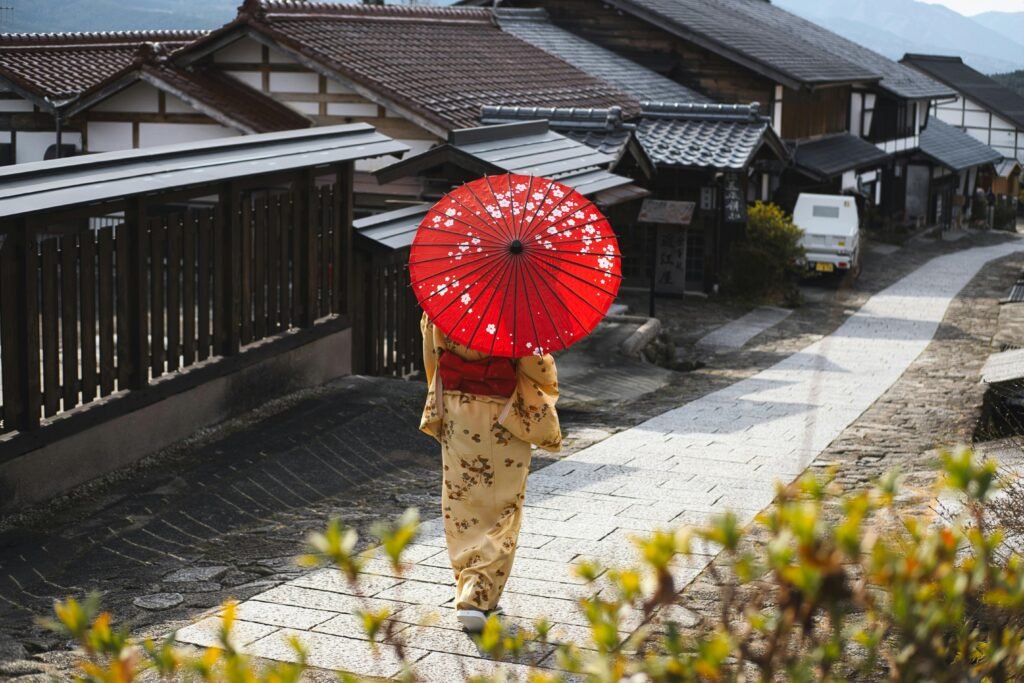Hello Wanderer! Wondering how to fit Japan’s highlights into just one week? You’re in the right place!
This 7-day itinerary hits the “three greats”: the vibrant streets of Tokyo, the peaceful landscapes of Takayama, and the historic charm of Kyoto. It’s balanced, authentic, and paced so you see the best of each place without feeling rushed.
I’ve been there—trying to squeeze everything into one week is tempting, but the best trips focus on a few highlights and moments to truly connect with the place. That’s exactly what this guide helps you do.
You’ll find tips for hotels, tours, neighborhoods, transport—including Japan Rail Pass routes—and must-try local dishes. In just seven days, you’ll get a perfect mix of city life, nature, and history, making your Japan adventure unforgettable.
Have more time to spare? Check out my two week Japan itinerary for a deeper dive into the country’s cities, mountains, and temples.
This post may include affiliate links. If you choose to make a purchase or booking through one of them, I may earn a small commission—at no extra cost to you. These commissions help keep the blog running and allow me to continue sharing useful travel content. Thanks so much for your support!
Quick Facts About Traveling to Japan
- Best time to visit: March to May (cherry blossom season) and September to November (autumn foliage). These months are ideal for planning your 7 day Japan itinerary or longer trips.
- Official language: Japanese
- Currency: Japanese Yen (JPY)
- 1 USD ≈ ¥145
- 1 EUR ≈ ¥157
- Safety: Japan is one of the safest countries in the world—perfect for solo travelers or families—just follow basic travel etiquette.
- Main religions: Shinto and Buddhism
- Ideal trip duration: A 2-week Japan travel itinerary gives first-time visitors plenty of time to explore, though a 7-day trip can also cover major highlights.
- Travel budget: Mid- to high-range; rail passes like the JR Pass help save on transport. For up-to-date costs, check the Cost of Living in Japan.
How to Get to Japan
Traveling to Japan is straightforward, with most international visitors arriving by air. The main entry points are Tokyo’s Narita International Airport (NRT) and Haneda Airport (HND), which handle the majority of long-haul flights. Kansai International Airport (KIX) in Osaka is another excellent option if your 7 day japan travel itinerary focuses on western Japan.
Direct flights are available from major cities in North America, Europe, and Asia, making Japan easily accessible. Once you land, Japan’s world-famous Shinkansen (bullet trains) allow fast and convenient travel to Tokyo, Kyoto, Osaka, Hiroshima, and beyond, without needing a car.
How to Get Around Japan
Japan’s transportation system is one of the best in the world, seamlessly connecting buzzing cities, peaceful countryside, and everything in between. When you’re working with just 7 days, understanding your travel options is key—it saves time and makes your journey far more enjoyable. From lightning-fast bullet trains and reliable buses to rental cars and taxis, there’s always a convenient way to get where you need to go. In this guide, we’ll break down the main ways to travel around Japan and share practical tips to keep your trip smooth and stress-free.
1. Domestic Flights
Flying is the quickest way to cover long distances, especially if you’re adding far-off regions like Hokkaido or Okinawa to your trip. Major airlines such as Japan Airlines (JAL) and All Nippon Airways (ANA) connect Tokyo, Osaka, and other regional cities. Low-cost carriers (Peach, Jetstar Japan) also offer affordable options. During peak seasons, book flights in advance for the best fares—platforms like Trip.com make it easy to compare airlines and find deals.
2. Rental Cars
If your Japan adventure takes you to rural regions like the Japanese Alps, Shikoku, or Hokkaido, renting a car offers the freedom to explore at your own pace. But in major cities such as Tokyo or Kyoto, public transportation is by far the easier and more efficient choice. For rentals, check Nippon Rent-A-Car or Toyota Rent a Car, and reserve ahead during holidays like Golden Week or Obon.
3. Public Transportation
Japan’s trains and buses are world-class and the easiest way to follow a 7-day itinerary in Japan. The Shinkansen (bullet train) links Tokyo, Kyoto, Osaka, and Hiroshima quickly . A Japan Rail Pass is highly recommended as it saves money on long-distance travel. For planning routes, HyperDia and JR East are very useful tools. Book Shinkansen tickets in advance during peak seasons.
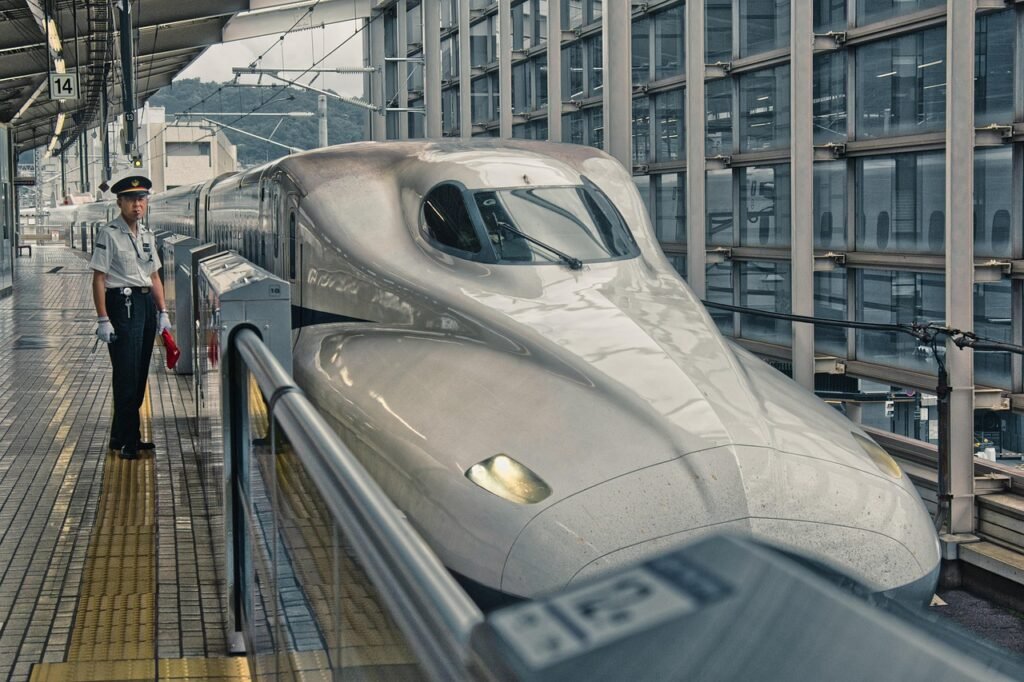
4. Shuttle Services
Airport and hotel shuttles are a stress-free way to transfer with luggage, especially on arrival. Companies like Airport Limousine Bus connect Narita and Haneda airports to major Tokyo neighborhoods. For a more personalized experience, consider Welcome Pickups, offering private airport transfers with an English-speaking driver. Booking online in advance ensures a smooth start to your trip.
5. Taxis and Ride-Sharing
Taxis in Japan are clean, safe, and reliable, but they do cost more than trains or buses. They’re most useful for late-night rides or short journeys. Apps like JapanTaxi make it easy to hail a cab. Ride-sharing options such as Uber exist but are limited to certain areas. No advance booking is necessary, though apps can make rides smoother.
Tips for Getting Around Japan
- Get a Japan Rail Pass early: Buy online before arrival for the best price.
- Use IC cards (Suica, Pasmo, ICOCA): Simplifies buses, subways, and even convenience store purchases.
- Download helpful apps: HyperDia, JR East, and Google Maps make navigating Japan’s trains effortless.
Your Seven Day Itinerary in Japan
Day 1 – Arrival in Tokyo
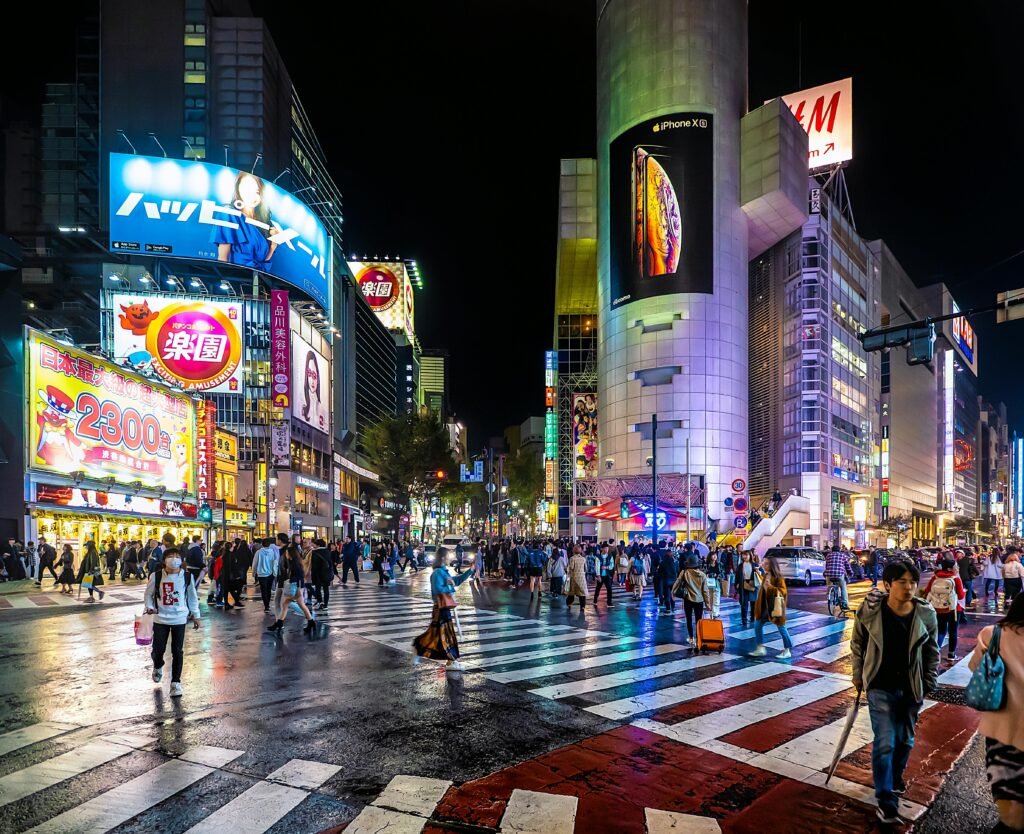
Morning
Welcome to Tokyo! Once you arrive, head to your hotel to check in and take a little time to freshen up before diving into your Tokyo adventure.
Transport Options :
- From Narita, take the Narita Express (N’EX) to Tokyo Station (~60 min, $30 USD, covered by JR Pass).
- From Haneda, take the Tokyo Monorail (~20 min, $5 USD, partially covered by JR Pass) to Hamamatsuchō Station, or the Keikyu Line (~15 min, $5 USD) to Shinagawa.
- For a more comfortable and stress-free arrival — ideal if you’re carrying luggage or landing late at night — consider a private transfer with Welcome Pickups. A driver will greet you at arrivals and take you directly to your hotel.
Afternoon
Make your way to Shibuya Crossing, the world’s busiest pedestrian scramble. Join the flow of people as you cross, then wander through Shibuya Center-gai and the nearby streets filled with shops, cafés, and endless entertainment.
Transport :
- If you’re near Shinjuku Station , take the JR Yamanote Line to Shibuya Station (~7 min, $1.50 USD, JR Pass covered).
Evening
Wrap up your evening with dinner at a local izakaya or a cozy casual spot in Shibuya. Treat yourself to comforting favorites like yakitori (grilled chicken skewers), okonomiyaki (a savory cabbage pancake with toppings), or katsu curry (crispy cutlet served with rich Japanese curry) — the perfect way to refuel after a day of exploring.
Where to Stay in Tokyo
Hotel/Neighborhood Tip: For easy transport and sightseeing on your first day, consider staying in Asakusa, Ueno, or the Tokyo Station area. These neighborhoods are central, well-connected, and a perfect starting point for your 7 day trip in Japan.
Here are excellent options for every budget:
- Budget-Friendly: Enjoy a comfortable stay at this affordable Tokyo hotel without stretching your budget.
- Mid-Range: Find the right balance of comfort, convenience, and value at this recommended mid-range hotel.
- Luxury: Indulge in top-class service and breathtaking city views at this luxury Tokyo hotel.
Recommended Tours & Experiences in Tokyo
Looking to add something special to your Japan trip ? These unique Tokyo activities bring culture, flavor, and fun to your trip:
- Tokyo Sumo Show – Experience the excitement of Japan’s national sport up close with a live sumo performance, a must for cultural enthusiasts.
- Sushi Making Class – Join a hands-on workshop with local chefs and learn how to prepare authentic sushi, one of Japan’s most iconic dishes.
- Sumida River Dinner Cruise – Dine aboard a traditional yakatabune boat while admiring Tokyo’s illuminated skyline along the Sumida River.
- Tokyo Drift Experience – For adrenaline seekers, step into the world of Fast & Furious with a one-of-a-kind Tokyo Drift driving adventure.
Day 2 – Tokyo: Hidden Gems & Culture
Morning
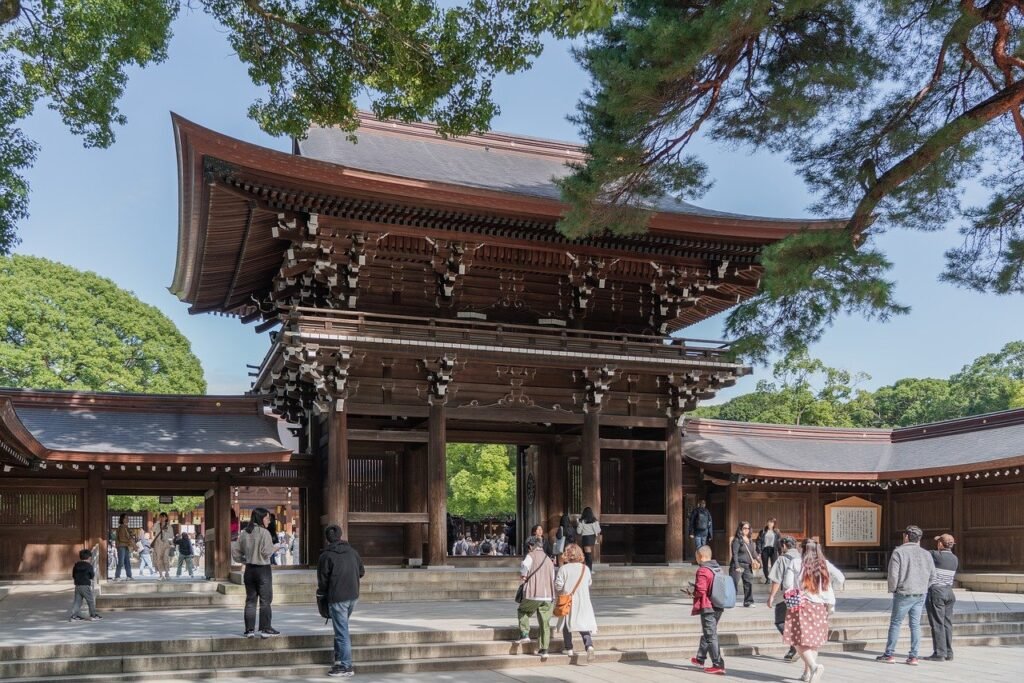
Begin your morning at the serene Meiji Shrine. Nestled in a lush forest, this Shinto shrine offers a calming break from Tokyo’s busy pace.
Transport :
- Take the JR Yamanote Line to Harajuku Station (about $1.50, 5 minutes from Shinjuku, covered by the JR Pass), then walk a few minutes to reach the shrine.
After your visit, enjoy a relaxed stroll through Yoyogi Park, a lively spot where locals gather for picnics, performances, and weekend fun.
Before moving on, treat yourself to a steaming bowl of udon noodles from a nearby shop — a simple, comforting classic.
Afternoon
Head to Shimokitazawa, a laid-back neighborhood known for its vintage shops, quirky record stores, and cozy cafés. Take your time wandering the streets and soaking up the local vibe. When you’re ready for a break, recharge with a plate of Japanese curry rice — a hearty, comforting dish often served with vegetables or chicken.
Transport :
- Take the Odakyu Line from Shinjuku to Shimokitazawa (~$1.50, 7 min).
Evening
In the evening, head to Roppongi Hills or Tokyo Skytree for breathtaking skyline views — both offer stunning panoramas of Tokyo lit up at night. Afterward, enjoy a comforting dinner of okonomiyaki, a savory Japanese pancake filled with cabbage and your choice of seafood or chicken.
Transport :
- From Shimokitazawa, head to Roppongi (Odakyu Line + Hibiya Subway Line, ~$2.50, ~20 min) for city views from Roppongi Hills, or ride the Hanzomon Line to Oshiage for Tokyo Skytree (~$2.50, ~25 min).
Day 3 – Tokyo → Hakone & Mount Fuji
Morning
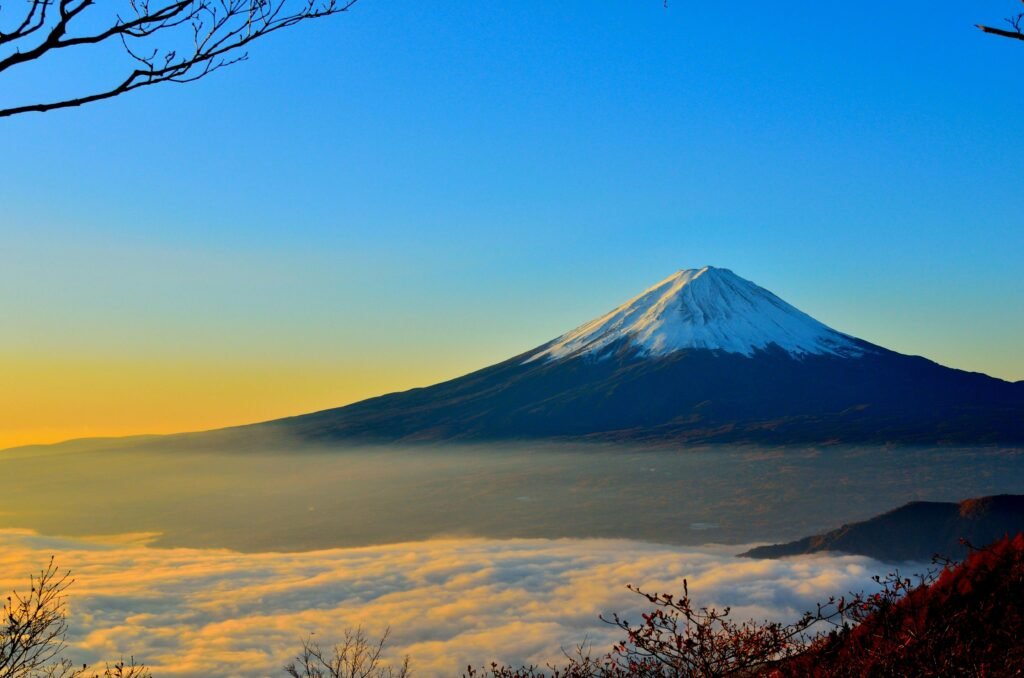
From your nearest major Tokyo station, take a train to Hakone-Yumoto. This scenic getaway is famous for its views of Mt. Fuji, volcanic landscapes, and peaceful lakes. Glide over steaming valleys on the ropeway and unwind with a Lake Ashi cruise, where sweeping mountain vistas make for perfect photos, relaxation, and a refreshing escape into Japan’s natural beauty — all in just one day.
Transport :
- You can take the Odakyu Romancecar (~90 min, $20 USD) for the fastest route, or the Odakyu Line Rapid/Express (~2 hrs, $8–10 USD) for a more budget-friendly option
💡 Pro tip: Grab the Hakone Free Pass (~$45–50 USD) for unlimited rides on buses, the Hakone Ropeway, and a scenic Lake Ashi cruise — it makes getting around Hakone super easy.
Afternoon
Take some time to relax at an onsen (hot spring bath) — Tenzan Onsen (~$12 USD) is a tranquil spot nestled in nature. After soaking, treat yourself to Hakone specialties like Owakudani’s famous black eggs, sweet Hakone manju (red bean buns), or hearty soba noodles topped with fresh mountain vegetables.
Evening
Head back to Tokyo and unwind after your scenic day in Hakone.
- Odakyu Romancecar: Hakone-Yumoto → Shinjuku (~90 min, $20 USD, seat reservation needed).
- Odakyu Rapid/Express: Hakone-Yumoto → Odawara → Shinjuku (~2 hrs, $8–10 USD).
💡 Pro tip: If you purchased the Hakone Free Pass with Romancecar, your return is already covered.
Recommended Tour
For a stress-free way to explore Hakone and Mount Fuji in one day, join a Full-Day Tokyo Excursion. The tour covers the Hakone Ropeway, the dramatic landscapes of Owakudani Valley, and a scenic Lake Ashi cruise with picture-perfect views of Mt. Fuji. With transport and expert guidance included, it’s an easy way to experience the highlights without worrying about the details.
Day 4 – Tokyo → Takayama (Japanese Alps)
Morning
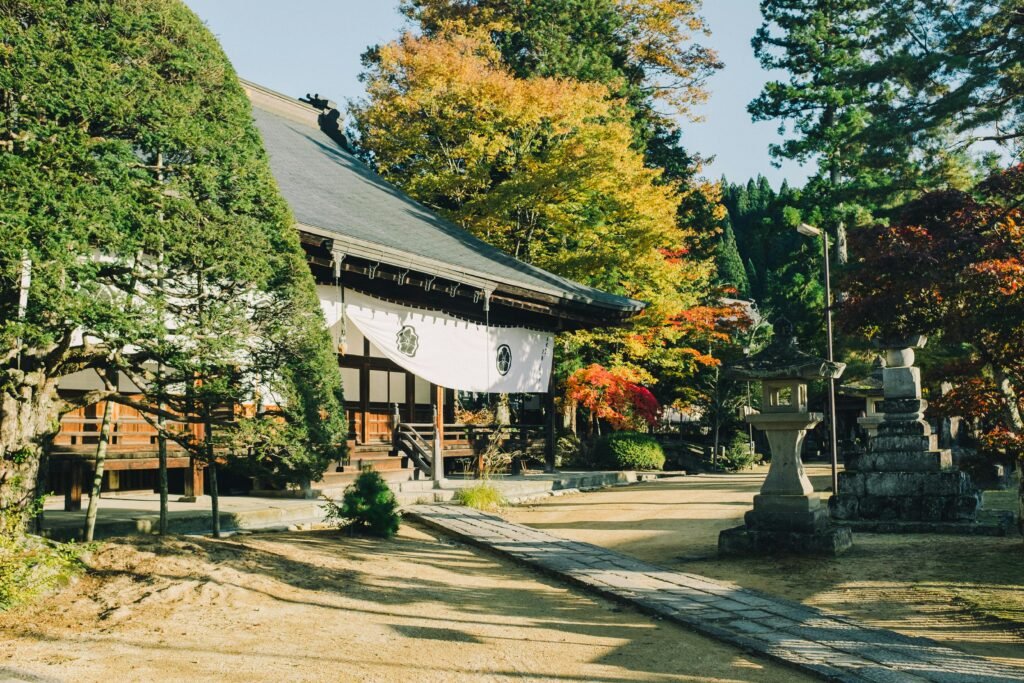
Take a scenic train ride to Takayama and enjoy the rolling mountains and countryside views along the way — a relaxing experience in itself. Nestled in the Japanese Alps, Takayama is a beautifully preserved Edo-period town with charming wooden houses, lively morning markets, and the historic Sanmachi Suji district. It’s especially stunning in spring, when cherry blossoms bloom, and in autumn, when the streets glow with vibrant foliage.
Transport :
- From Tokyo, take the Shinkansen to Nagoya (~1 hr 25–40 min), then transfer to the JR Limited Express Wide View Hida to Takayama (~2 hr 15–30 min). Total travel time is about 4–4.5 hrs, costing around ¥17,000–¥18,000 (≈$120–150 USD) without a JR Pass (fully covered if you have one).
- With the JR Pass, the route is: Take the Hikari Shinkansen from Tokyo to Nagoya (~1 hr 25–40 min), then transfer to the JR Wide View Hida to reach Takayama (~2 hr 15–30 min).
Afternoon
Explore Sanmachi Suji, Takayama’s historic district full of charm. Stroll along streets lined with traditional wooden houses, quaint craft shops, and old sake breweries. Don’t forget to try local delights like gohei mochi (grilled rice cakes with sweet miso) or Hida beef croquettes — perfect little bites of the region’s flavors!
Evening
Check into a traditional ryokan (Traditional Japanese inn) for a truly memorable experience. Dinner usually features a kaiseki meal with Hida beef and seasonal vegetables, showcasing the best local flavors. Afterward, relax and soak in the ryokan’s soothing onsen — the perfect way to end your day in Takayama.
Where to Stay in Takayama
Hotel/Neighborhood Tip: Stay near Sanmachi Suji for easy access to the historic streets, local shops, and a peaceful evening atmosphere.
- Budget-Friendly: Comfortable and affordable budget hotel— ideal for travelers looking to save without sacrificing convenience.
- Mid-Range: This hotel provides a perfect balance of comfort, amenities, and a central location for exploring Takayama.
- Luxury: Top-class hotel with great amenities and prime locations for travelers seeking a premium experience in Takayama.
Recommended Tours & Experiences
- Kanazawa & Shirakawa-go Guided Tour: Visit the UNESCO-listed village of Shirakawa-go and experience traditional Japanese countryside life with a knowledgeable guide.
- Private Takayama Tour: Explore Takayama’s historic streets, local markets, and cultural highlights on a personalized tour with a regional guide.
- Onigiri & Miso Soup Workshop: Join a hands-on cooking class at a Buddhist temple to learn traditional onigiri and miso soup, immersing yourself in local culinary culture.
Day 5 – Takayama & Shirakawa-go
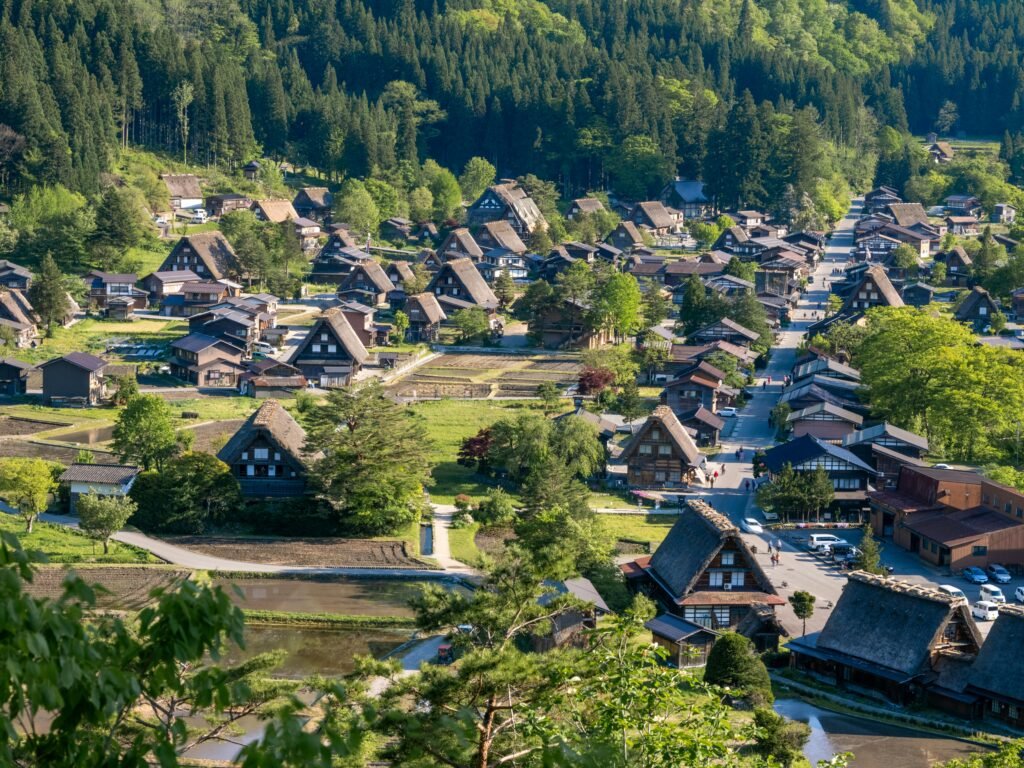
Morning
Start your day at Takayama’s lively morning market, where you can browse fresh produce, handmade crafts, and local snacks. Treat yourself to a light breakfast of Hida miso soup, fresh mountain vegetables, or grilled skewers — a delicious way to taste the flavors of the region.
Afternoon
Discover the UNESCO-listed village of Shirakawa-go, renowned for its iconic thatched-roof gassho-zukuri houses set against a scenic mountain backdrop. Take a leisurely stroll along the streams winding through the village — perfect for photos. Don’t miss local treats like gohei mochi (grilled rice cakes with sweet miso) or hearty soba noodles, specialties of the area.
Transport :
- Take a Nohi or Kaetsuno bus to Shirakawa-go (~50 min, $8 USD).
Evening
Return to your hotel and settle in for a relaxing evening. Enjoy a peaceful night in Takayama’s charming historic streets, recharging for the adventures ahead.night in the historic town.
Transport :
- Catch the bus back to Takayama (~50 min, $8 USD).
Day 6 – Takayama → Kyoto (History)
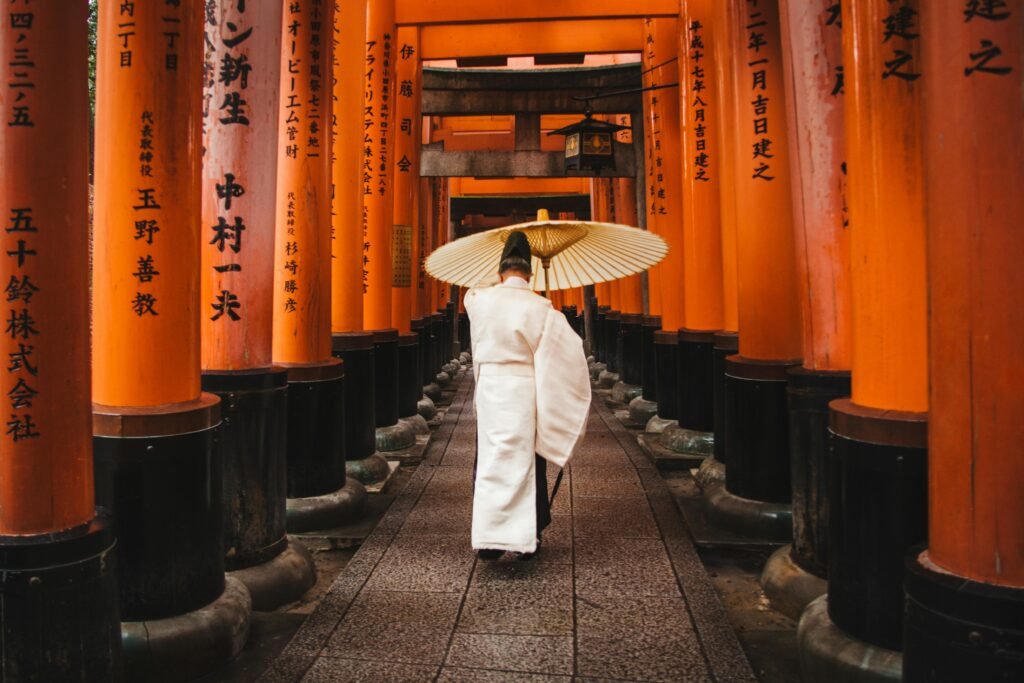
Morning
Travel from Takayama to Kyoto .
Transport :
- Take the JR Limited Express Wide View Hida from Takayama to Nagoya (~2.5 hrs, $60–70 USD), then transfer to the Shinkansen to Kyoto (~40 min, $40 USD).
- With a JR Pass, the entire journey is fully covered. Enjoy scenic mountain and countryside views along the way
Kyoto is Japan’s historic and cultural heart, home to over 2,000 temples and shrines, including Fushimi Inari and Kinkaku-ji. Stroll through Higashiyama and Gion to experience traditional wooden machiya houses, tea houses, and authentic Japanese streets. The city also offers cultural experiences like tea ceremonies, calligraphy, and local cuisine, making it an essential stop on any 7-day Japan itinerary.
Afternoon
Visit the iconic Fushimi Inari Shrine, famous for its thousands of vermilion torii gates winding up the hillside. Grab a light snack from nearby stalls such as kitsune udon (udon with fried tofu) or inari sushi (rice wrapped in sweet tofu skin), both connected to the shrine’s fox deity.
Transport :
- If you are near Kyoto Station, take the JR Nara Line to Inari Station (~5 min, $2 USD, JR Pass covered).
Evening
Stroll through Gion, Kyoto’s historic district known for tea houses and geisha culture. Dinner options include kaiseki-style meals, grilled river fish, or yudofu (tofu hot pot), a Kyoto specialty. Keep an eye out—you might spot a geisha or maiko heading to evening appointments.
Transport :
- From Fushimi Inari, take the Keihan Main Line to Gion-Shijo Station (~10 min, $2 USD).
Where to Stay in Kyoto
Hotel/Neighborhood Tip: For the best experience, base yourself near Gion, Higashiyama, or Kyoto Station—these areas offer easy access to major sights, authentic dining, and rich cultural experiences.
Kyoto has excellent options for every travel style and budget:
- Budget-Friendly – Cozy, affordable with great access to transport. Check out this well-rated budget hotel in Kyoto.
- Mid-Range – A balance of comfort and convenience, ideal for most travelers. This recommended mid-range hotel is a great choice.
- Luxury – For those who want premium amenities and prime locations, this top-rated luxury hotel in Kyoto is worth the splurge.
Recommended Kyoto Experiences
To make your Japan trip itinerary for 7 days unforgettable, add these unique cultural activities to your Kyoto stay:
- Tea Ceremony in Kimono – Take part in a traditional matcha tea ceremony while dressed in a beautiful kimono, complete with sweet treats.
- Kendo & Samurai Lesson – Step into samurai culture by training in kendo with authentic uniforms and equipment.
- Calligraphy Class – Learn the art of Japanese calligraphy in a peaceful temple setting guided by local masters.
- Gion Night Walking Tour – Stroll through Gion’s lantern-lit streets, uncovering the history and mystery of Kyoto’s geisha district.
Day 7 – Kyoto → Tokyo & Departure
Morning
Start your final day in Kyoto with a visit to either Kinkaku-ji (the Golden Pavilion), a breathtaking Zen temple covered in gold leaf, or the Arashiyama Bamboo Grove, famous for its towering bamboo paths. Treat yourself to local snacks like yatsuhashi (cinnamon rice flour sweets) or matcha soft serve — Kyoto specialties you haven’t tried yet.
Transport :
- From central Kyoto, take a bus or taxi to Kinkaku-ji (~30 min, $2–$5 USD) or train + walk to Arashiyama (~30 min, $2–$3 USD).
Afternoon
Take the Shinkansen back to Tokyo. Along the way, consider optional stops like Ueno Park for a peaceful stroll among greenery, or Ginza for a mix of upscale shopping and street food. For lunch, savor a tempura rice bowl or chawanmushi (savory steamed egg custard) for a taste of classic Japanese flavors.
Transport :
- Take the Shinkansen from Kyoto Station to Tokyo (~2.5 hrs, $120 USD, JR Pass covered).
Evening
Make your way to the airport and prepare for your departure, reflecting on the amazing experiences from your trip.
Transport :
- To Narita Airport: From Tokyo Station, take the Narita Express (N’EX) directly to Narita Airport (~1 hr, ~$30 USD).
- To Haneda Airport: From Tokyo Station, take the Yamanote Line or Keihin-Tohoku Line to Shinagawa Station (~20 min, JR Pass covered), then transfer to the Keikyu Line Airport Express to Haneda Airport (~20 min, $4–5 USD).Total time: ~40 min . Total cost: ~$6–7 USD .
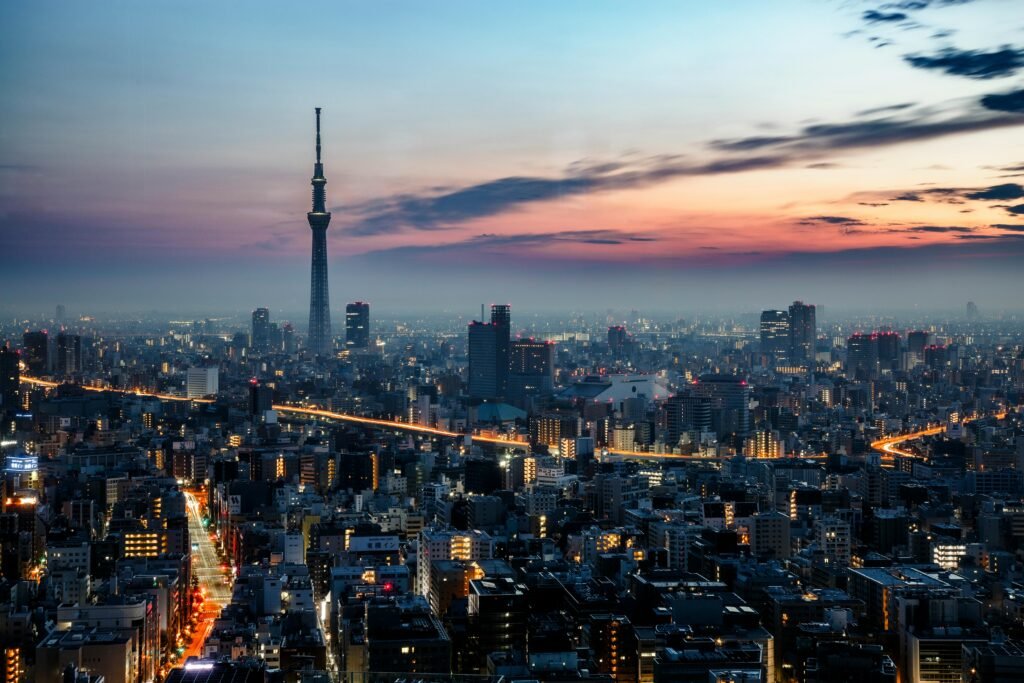
Conclusion
By the end of this week, you’ll have experienced a perfect mix of Japan’s modern energy, serene landscapes, and timeless history. You won’t see every single landmark—but you will savor the moments that truly matter, explore at a comfortable pace, and create memories that last.
Use this guide to navigate hotels, tours, neighborhoods, transport, and must-try dishes—but remember, the best part of travel is finding your own rhythm along the way. With balance, flexibility, and a sense of adventure, your one-week Japan journey will be unforgettable.
Which part of Japan are you most excited to experience first—the neon skylines, the mountain villages, or the timeless temples? Let me know in the comments!

